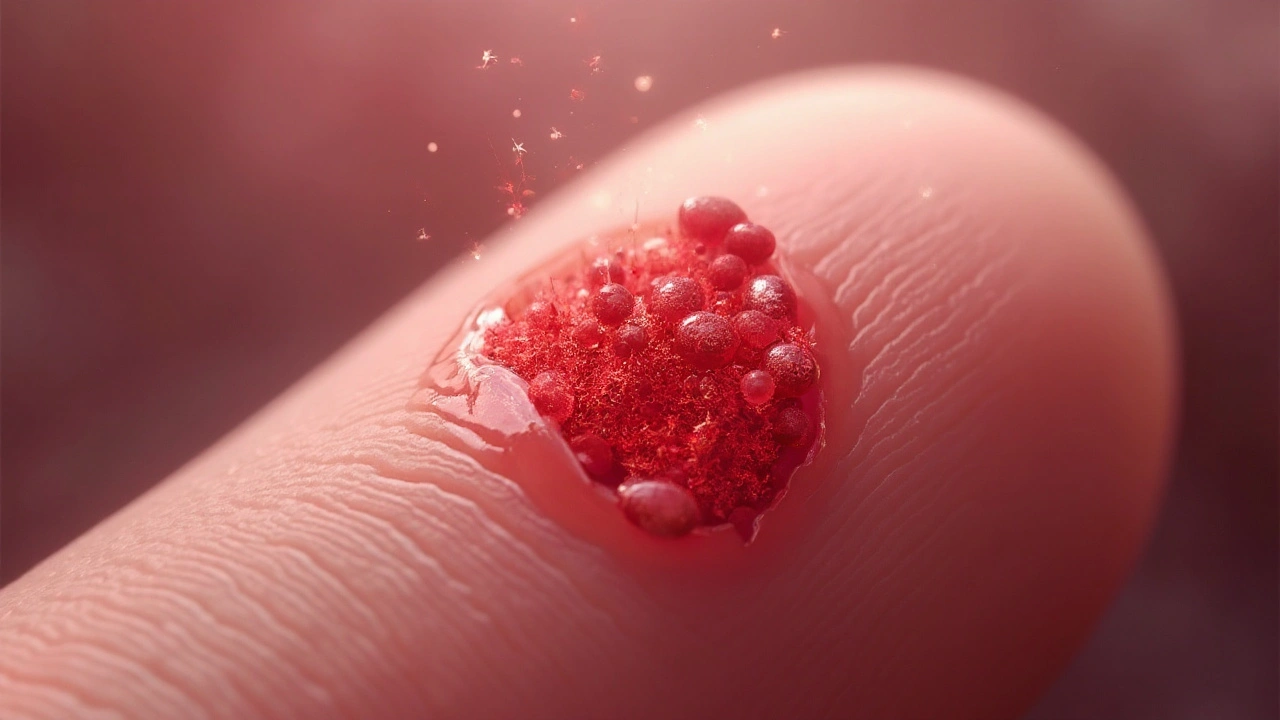Ever wonder why a small cut stops bleeding in seconds? That’s hemostasis at work. It’s the body’s built‑in system to seal blood vessels, prevent blood loss, and start healing. Understanding how it works can help you make smarter choices about meds, supplements, and lifestyle habits that keep the system running smoothly.
First, the blood vessels tighten. When a vessel is injured, the walls contract like a rubber band, cutting down flow. This is called vasoconstriction and buys the body a few precious seconds.
Second, a plug forms. Platelets—tiny blood cells—rush to the site, stick together, and create a soft clot. They release chemicals that attract more platelets and start the clotting cascade.
Third, the clot hardens. A series of proteins called clotting factors convert fibrinogen into fibrin, a thread‑like mesh that locks the platelet plug in place. Over time, the clot dissolves as the wound heals, a process called fibrinolysis.
Many drugs either help the clotting process or intentionally block it. Anticoagulants like warfarin, apixaban, and newer direct‑acting oral anticoagulants (DOACs) are prescribed to prevent dangerous clots in conditions such as atrial fibrillation or deep‑vein thrombosis. While they lower the risk of stroke, they also raise bleeding risk, so doctors monitor blood tests closely.
On the flip side, some agents speed up clotting. Vitamin K, found in leafy greens, boosts the production of clotting factors. If you’re on warfarin, a sudden jump in vitamin K intake can reduce the drug’s effect, leading to unexpected clotting.
Supplements pop up often in discussions about hemostasis. For example, the “Heart’s Ease” supplement mentioned in our blog combines CoQ10, omega‑3s, and antioxidants, which can support cardiovascular health but may also affect platelet function. Activated charcoal, another popular product, can bind drug molecules and inadvertently lower the effectiveness of anticoagulants if taken at the same time.
Even everyday over‑the‑counter meds matter. Non‑steroidal anti‑inflammatory drugs (NSAIDs) like ibuprofen can thin the blood by interfering with platelet aggregation. If you’re prone to bruising or have a bleeding disorder, swapping NSAIDs for acetaminophen can be a safer choice.
Whenever you start a new prescription, supplement, or even a herbal remedy, ask your pharmacist or doctor how it might interact with your clotting system. A quick chat can prevent unwanted bleeding or clotting events.
Finally, lifestyle habits play a role. Staying hydrated keeps blood viscosity normal. Excessive alcohol can impair platelet function, while regular moderate exercise promotes healthy circulation without over‑stimulating clotting pathways.
In short, hemostasis is a finely tuned balance. Knowing the basics—vessel constriction, platelet plug, and fibrin mesh—helps you understand why certain drugs are prescribed and why some supplements deserve a closer look. Keep an eye on any changes in bruising, nosebleeds, or unusual bleeding, and bring them to your clinician’s attention. Small adjustments in medication timing, diet, or supplement use can keep your clotting system humming without hiccups.

Discover how blood clotting kick‑starts wound healing, the key players in the process, and what you can do to support optimal tissue repair.